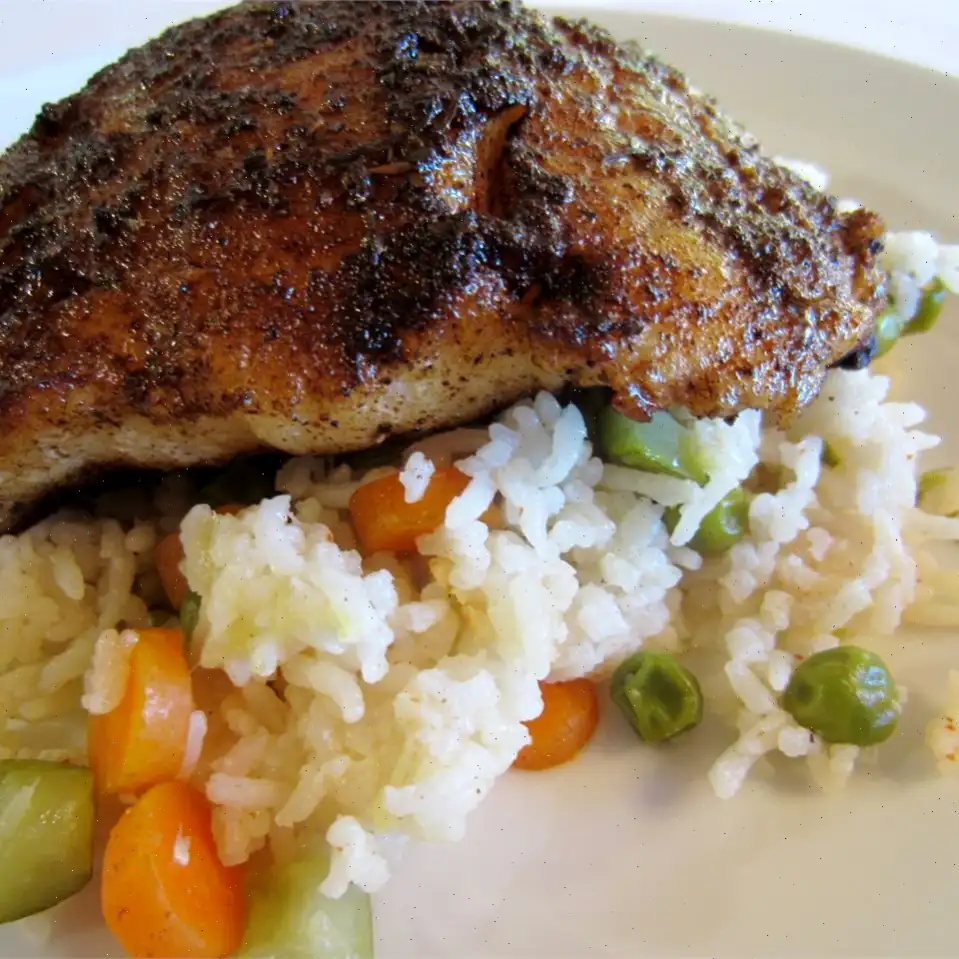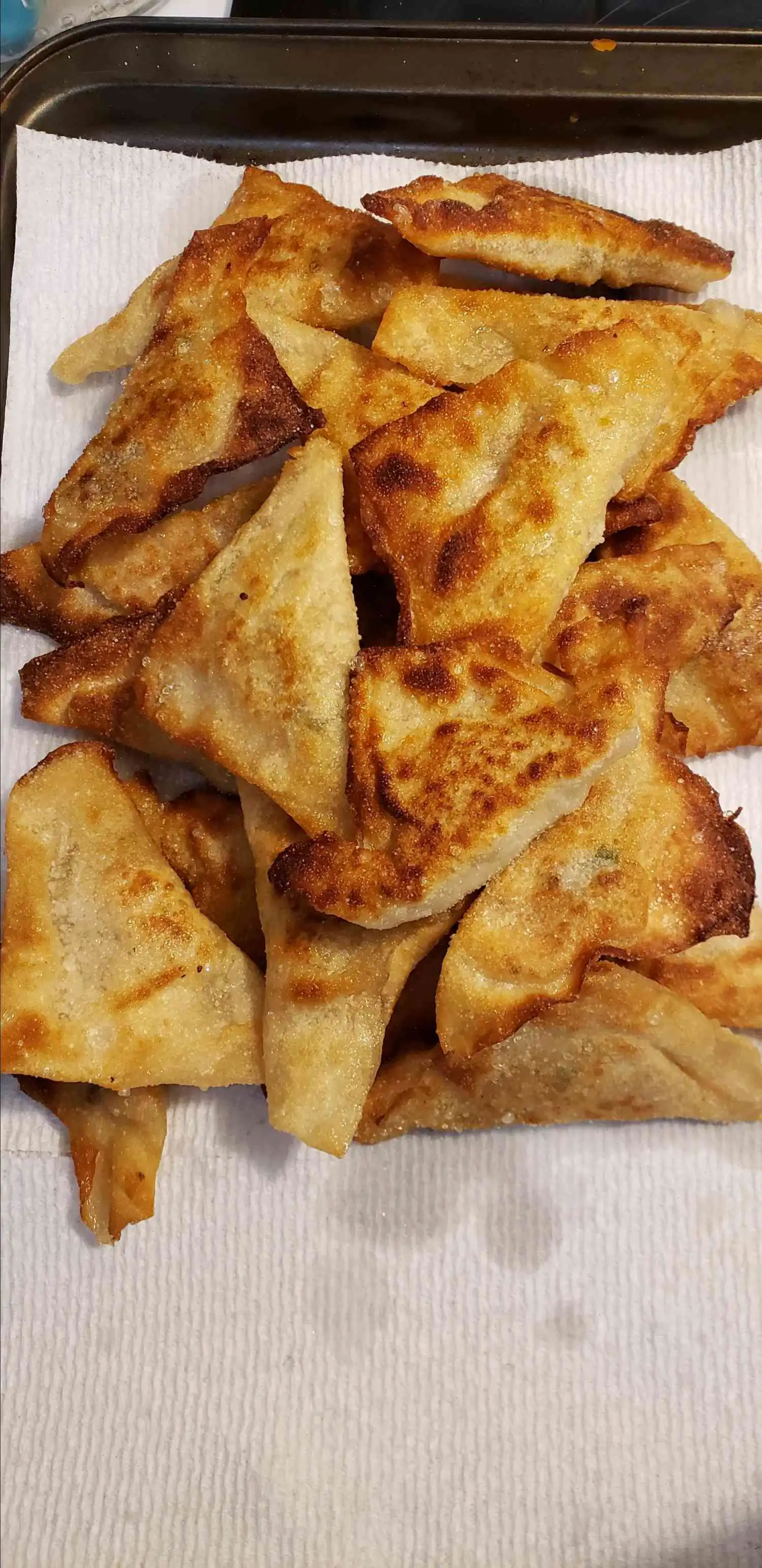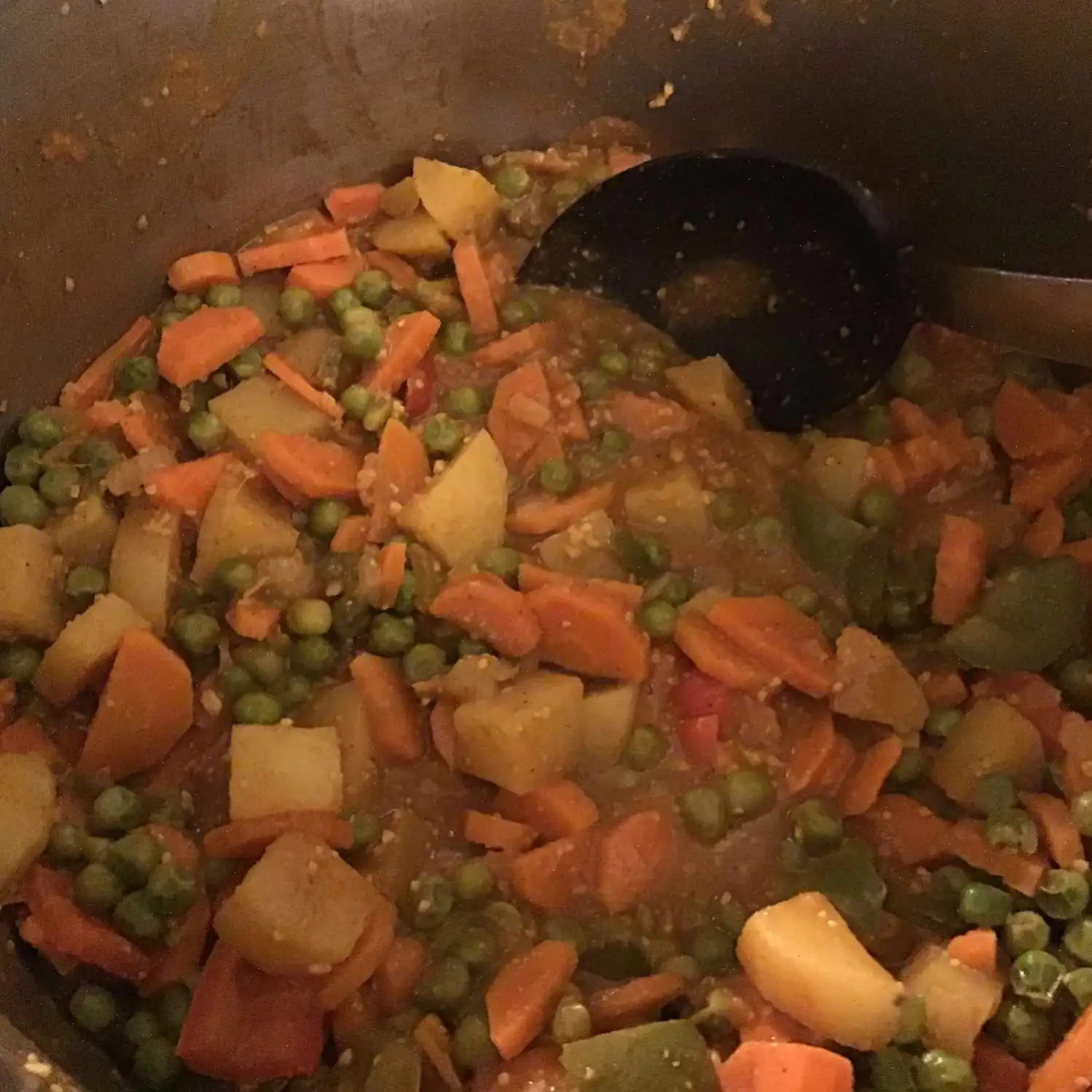
Kingombo Patatas Recipe
Ingredients
- cup cornmeal
- Salt and ground black pepper to taste
- 2 large potatoes, cut into -inch cubes
- 1 pound fresh okra, trimmed and cut into -inch pieces
- 1 white onion, finely chopped
- cup cooking oil
Directions
Step 1: In a large resealable plastic bag, combine the cornmeal, salt, and black pepper. Add the chopped potatoes, okra, and onion to the bag. Seal the bag and shake well until all vegetables are coated with the cornmeal mixture.
Step 2: Heat the cooking oil in a large skillet over medium heat. Wait until the oil is shimmering, but not smoking.
Step 3: Carefully add the coated vegetables into the hot oil. Fry them for about 10 to 12 minutes, or until the potatoes are tender and the okra and onion have browned. Stir occasionally to ensure even cooking.
Step 4: Once cooked, use a slotted spoon to transfer the vegetables to a plate lined with paper towels to drain excess oil.
Cook's Notes
- Camellia oil is used in this recipe, but feel free to use any cooking oil you prefer.
- You can choose to peel the potatoes, but leaving the skin on is perfectly fine. The author does not peel the potatoes.
Nutrition Facts (Per Serving)
| Nutrition Component | Amount |
|---|---|
| Calories | 133 |
| Total Fat | 2g (2%) |
| Saturated Fat | 0g (1%) |
| Sodium | 30mg (1%) |
| Total Carbohydrate | 27g (10%) |
| Dietary Fiber | 4g (15%) |
| Total Sugars | 2g |
| Protein | 4g (7%) |
| Vitamin C | 30mg (33%) |
| Calcium | 57mg (4%) |
| Iron | 2mg (8%) |
| Potassium | 573mg (12%) |
* Percent Daily Values are based on a 2,000 calorie diet. Your daily values may vary depending on your calorie needs. Nutrient information may vary depending on the ingredients used.
Recipe by: SONNYCHIBA

Origin of Kingombo Patatas
Kingombo Patatas is a delicious dish that blends the rich culinary traditions of Africa with the vibrant flavors of the American South. While it has become popular in various parts of the United States, especially in areas with large African-American and Southern populations, its roots trace back to West Africa. Okra, a key ingredient in this dish, is widely used in African cooking, particularly in stews and fried dishes. The pairing of okra with potatoes, seasoned with cornmeal and fried, reflects the fusion of African ingredients with the flavors of Southern soul food.
Regional Variations and Special Features
While Kingombo Patatas is enjoyed across the United States, regional variations exist. In the southern states, for example, the dish may be served alongside fried chicken or grilled meats, making it a popular side dish for family gatherings and BBQs. In other regions, it can be served as a main dish, especially in vegetarian or plant-based meals. The dish's versatility is one of the reasons for its widespread appeal, as it can be adjusted to suit different tastes and dietary preferences.
Differences from Similar Dishes
Kingombo Patatas stands out from other fried vegetable dishes primarily because of its use of okra. While okra is often found in gumbo or stews, the crispy texture achieved through frying makes it unique. Additionally, the combination of cornmeal with potatoes and okra creates a distinct crunchy coating that is not found in many traditional fried vegetable dishes. Unlike dishes such as fried potatoes or okra fries, the inclusion of both vegetables and the seasoned cornmeal batter gives Kingombo Patatas its own unique identity.
Where to Serve Kingombo Patatas
Kingombo Patatas is a versatile side dish that can be served in many settings. It is often seen on the dinner tables of African-American families during holiday feasts or Sunday dinners. The dish is also commonly found at outdoor cookouts, where it pairs well with meats like ribs or fried chicken. Whether as a light snack or a hearty side dish, Kingombo Patatas can be enjoyed as part of a larger meal or as a standalone treat for those who love the combination of crispy, fried flavors.
Fun Facts about Kingombo Patatas
- Okra, one of the main ingredients in Kingombo Patatas, is often referred to as "lady's finger" due to its elongated shape.
- In some African cultures, okra is believed to have health benefits, including aiding in digestion and lowering blood pressure.
- Although the dish is popular in the U.S., its influence can also be seen in Caribbean cooking, where similar dishes featuring fried okra and root vegetables are common.
- Kingombo Patatas is often served with a tangy dipping sauce, which may include hot sauce or a vinegar-based condiment to complement the dish's richness.








